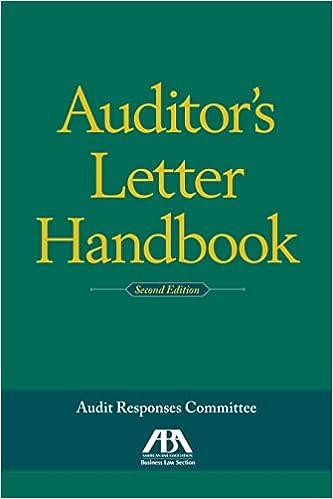Question
2. _____i. What is total Stockholders Equity based on the following account balances? Paid in Capital: Common Stock $922,000 Paid-in-Capital in excess of par 9,243,000
2.
_____i. What is total Stockholders Equity based on the following account balances?
Paid in Capital:
| Common Stock | $922,000 |
| Paid-in-Capital in excess of par | 9,243,000 |
| Retained Earnings | 20,875,000 |
| Other Comprehensive Income | 65,000 |
| Treasury Stock | 74,000 |
Total Stockholders Equity = ________________
_____ii. Treasury stock represents
- Contra-equity account
- The cost of company shares repurchased by the company
- A reduction of stockholders equity
- All of the above are both correct
3.
_____i. Bonds are popular source of financing because:
- Financial analysts tend to downgrade a company that has raised large amounts of cash by frequent issue of stock.
- A company having cash flow problems can postpone payment of interest to bondholders.
- Bond interest expense is deductible for tax purposes, while dividends paid on stock are not.
- The bondholders can always convert their bonds into stock if they choose.
____ii. Assume bonds were issued during the month of September. When comparing the balance sheet for August 31 to September 30, if Total Assets increased by $428,000 and Total Liabilities increased by $250,000, then the change in Stockholders Equity would be _____________. (Identify amount and if it is an increase or decrease)
_____4. The time it takes McDonalds to purchase beef patties, cook and sell burgers, and collect cash from customers is known as the:
- Accounting cycle
- Financing cycle
- Operating cycle
- Investing cycle
- Spin cycle
_____5. Which of the following is a current liability?
|
|
|
|
|
_____ 6. The Notes to the financial statements indicate the types of sales included in the receivables accounts along with the uncollectible amounts balance (Allowance for Doubtful Accounts).
- T or F: If gross receivables are $225,000 and the allowance for doubtful accounts is 25,000, the Balance Sheet will indicate a line item for Receivables, net = $200,000.
- The valuation method for receivables is called:
- Fair value
- Historical Cost
- Net present value
- Lower of cost or net realizable value (LCNRV)
- Net realizable value
Step by Step Solution
There are 3 Steps involved in it
Step: 1

Get Instant Access to Expert-Tailored Solutions
See step-by-step solutions with expert insights and AI powered tools for academic success
Step: 2

Step: 3

Ace Your Homework with AI
Get the answers you need in no time with our AI-driven, step-by-step assistance
Get Started


